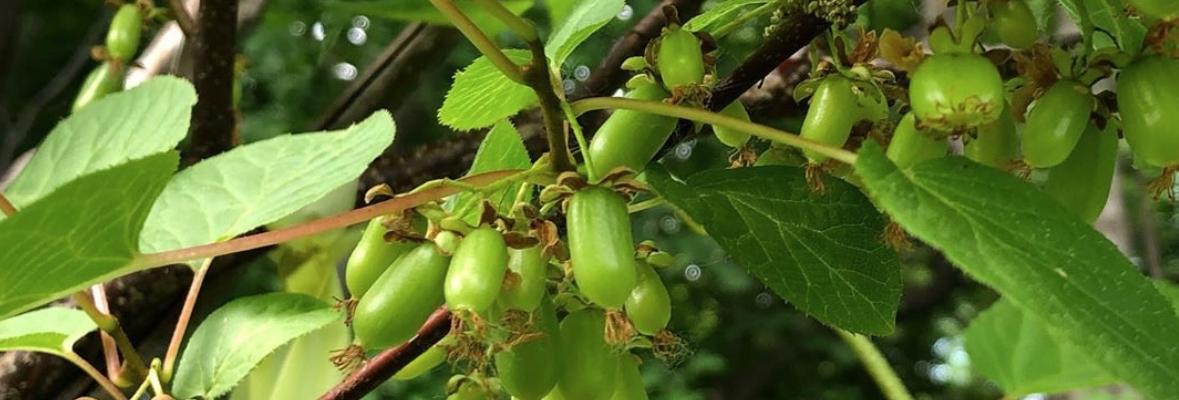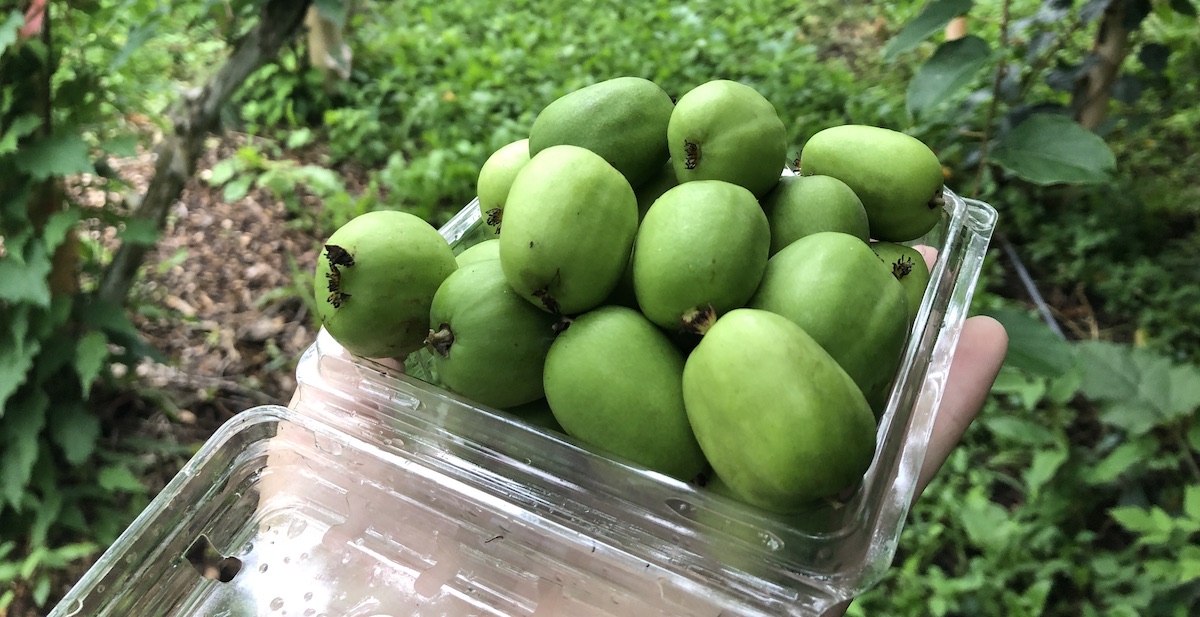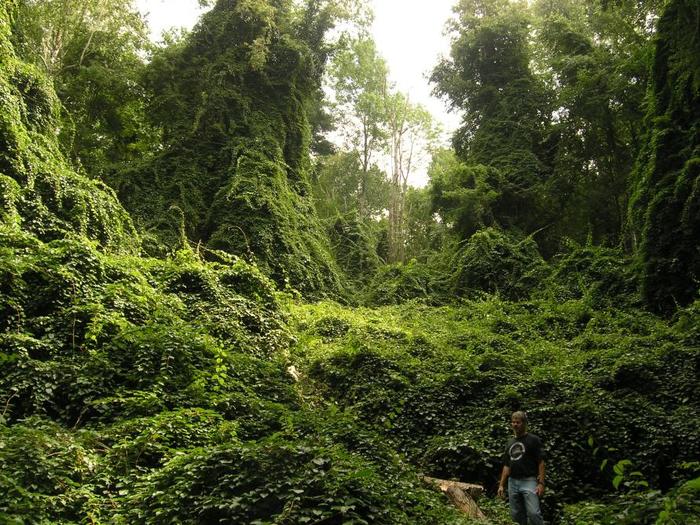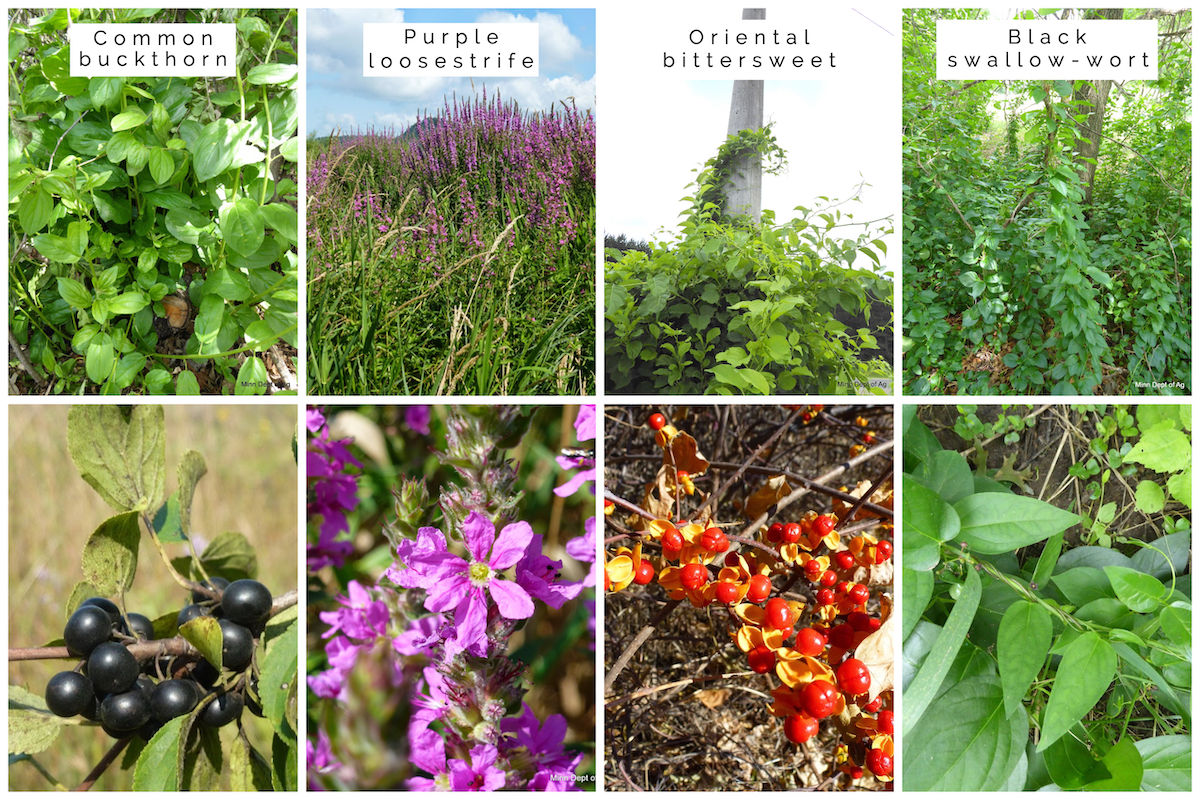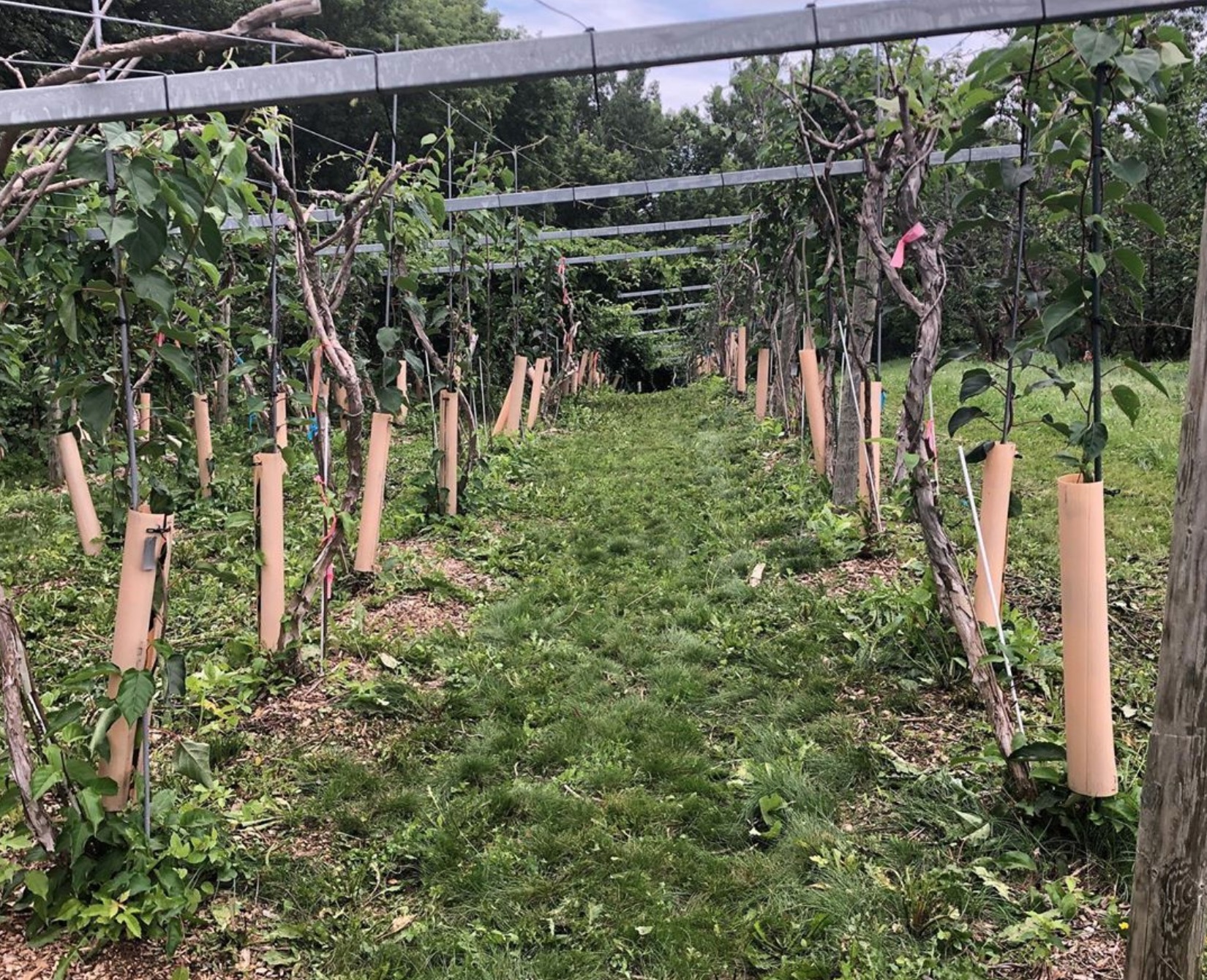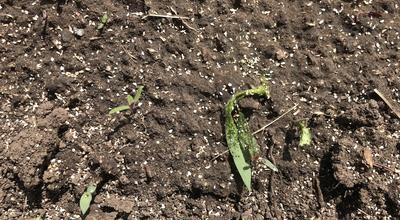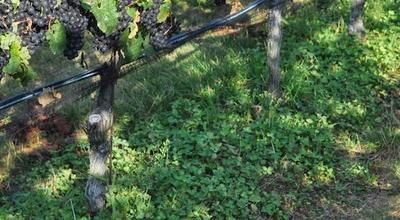Here at the University of Minnesota, we work to develop and test fruit species that are well-suited to growing in the Upper Midwest. One of these is the hardy kiwi, or kiwiberry. It is a small, smooth-skinned, grape-sized fruit produced by several species in the genus Actinidia which are closely related to the fuzzy brown kiwifruit (A. deliciosa).
We’ve been growing kiwiberry at the University of Minnesota for over 30 years, evaluating species, varieties, and growing practices for production in the Upper Midwest.
Kiwiberry is an exciting fruit crop for growers looking to diversify, fill in harvest gaps, offer a new fruit to customers, and take advantage of the potential economic and environmental benefits of growing a perennial crop.
Evaluating a new fruit crop
When a fruit crop (or any plant) is introduced to a new area there are a lot of factors to consider, varieties to develop and test, growing practices to figure out, and challenges to overcome. We conduct research in our orchards, greenhouses, labs, and in cooperation with other institutions, agencies, and regional farmers.
Beyond varieties and growing practices, there’s another factor we consider when working with a new fruit crop, and that is invasiveness. Could this new plant become invasive in Minnesota?
Cause for concern
In Massachusetts, New York and New Jersery, some groups are concerned that kiwiberry, specifically A. arguta, could be invasive. The species is currently listed as potentially invasive by the Massachusetts Invasive Plants Advisory Group, although it is not regulated by the state’s Department of Agricultural Resources.
Hardy kiwi was introduced in Massachusetts in 1876 for both its ornamental and fruit qualities. Over time, some plants have grown beyond their original planting location and into an area of forest. An important consideration in this particular situation is that this area of forest had been clear cut before the Actinidia vines moved in. This is an excellent example of how land management practices can greatly affect the ability of a species to become established.
Despite the management practices that allowed for the spread of Actinidia vines in this area, the concern in Massachusetts has sparked awareness in other regions where kiwiberry is grown or is being evaluated as a potential niche fruit crop, including Minnesota.
Considering invasiveness
What is an invasive plant?
An invasive plant, by definition, is "non-native to the ecosystem under consideration and whose introduction causes or is likely to cause economic or environmental harm or harm to human health".
In Minnesota, some invasive plants you’ve likely heard of include buckthorn (Rhamnus cathartica and Frangula alnus), purple loosestrife (Lythrum salicaria and L. virgatum), Oriental bittersweet (Celastrus orbiculatus), and black swallow-wort (Cynanchum louiseae). These all have different origins and different means of introduction and spread, which also means they require different management strategies.
Non-native doesn’t equal invasive
Of course, it is important to remember that just because a plant isn’t native doesn’t mean it is invasive. Many non-native, or introduced, plants are grown in Minnesota which don’t do any harm - think apples and many other fruits, many ornamental shrubs and trees, tomatoes and most other garden plants, most culinary herbs, almost all your annual bedding flowers, and many perennial flowers.
Some global research concluded that about 10% of introduced species will naturalize in their new habitats, and of those about 10% will become invasive. This “tens rule” is often cited when discussing invasive plants, but a wealth of research reminds us that there are many factors involved so it is difficult to apply a general rule to specific regions, for example Minnesota. However, it is true that out of the many introduced plants that are grown in Minnesota, only a small percentage have escaped cultivation and become invasive.
Evaluating invasiveness potential
The factors that contribute to the potential for a plant to become invasive are a combination of biological, environmental, and human-related. These have varying levels of influence at different stages of the invasion process. Plant invasiveness is a topic of considerable research in the U.S. and around the world, and we apply that research when evaluating a new fruit crop.
After compiling botanical and historical data about a new fruit crop, we carefully observe the plant in our research orchards to determine if the plant exhibits invasive tendencies.
At our orchards, we have several Actinidia plantings that include multiple species which we use for breeding and evaluating growing practices. As part of our regular field research protocol, we incorporate tasks to evaluate invasiveness potential:
- We monitor the area around the orchard area for seedlings, which would indicate seeds from dropped fruit are able to germinate outdoors.
- We search public land surrounding the orchard for seedlings, which would indicate that birds or mammals like raccoons have eaten the fruit and dispersed the seeds in their waste, and that the seeds are able to germinate outside of a cultivation environment.
- We watch for suckering, especially to see if suckers emerge beyond 10 feet from the main trunk, which would indicate an ability to spread great distances via the root system.
- Being a vine, we observe how the Actinidia plants grow and if their vines have the potential to reach into surrounding trees and twine around them.
We use management practices that promote healthy vines and maximum fruit yield, which also help minimize invasiveness potential:
- We routinely prune the vines.
- Pruning promotes healthier vines and the development of fruit-bearing wood.
- Pruning keeps the orchard more manageable and easier to work in.
- Pruning constrains the vines to the trellis system and keeps them from growing into neighboring areas.
- We manage the orchard floor by mulching and mowing.
- This helps control weeds, which reduces competition for the vines and minimizes plant diseases and pest insects.
- This helps reduce the risk of unwanted Actinidia establishment through suckering.
- We harvest all the fruit.
- Marketable fruit is the primary reason we grow Actinidia.
- Harvesting all the fruit prevents the fruit from being eaten by birds or mammals which could result in scattering seed.
- Harvesting the fruit also minimizes the risk of plant diseases in the orchard.
So far so good
In the 30 or so years that the University of Minnesota has been growing Actinidia, researchers have not seen any evidence of naturalization or invasiveness:
- We have never found any unplanned seedling growth within or around the orchards.
- We have never found any feral Actinidia plants growing outside our orchards.
- We have not seen root suckers emerge beyond 10 feet of the main trunk.
- We have not seen evidence of vines bridging spatial gaps and climbing nearby trees.
We are currently conducting seed germination trials for Actinidia to get a better idea of germination percentage and seed survival time in the soil seed bank in Minnesota’s climate. This will give us a clearer understanding if the seeds from fruit eaten by birds or other animals and deposited in their waste, for example, could germinate and grow in places we don’t intend.
Working together
We also work closely with other departments and agencies to evaluate new crops for risks including invasiveness. The Minnesota Department of Agriculture (MDA) is beginning a risk assessment study of kiwiberry in 2021, and will continue evaluations as long as necessary. We will be working side by side with MDA on this evaluation.
We also keep an eye on what’s happening in other states. We follow their research and evaluations, and communicate with other universities who are working on similar issues.
Carefully moving forward
As you can see, many factors influence the potential for a plant to become naturalized or invasive in a new area. That is why we are diligent in monitoring and evaluating all aspects of growth and crop production when working with any new fruit crops.
With all of these efforts combined, we are able to introduce new fruit crops and management recommendations so growers can incorporate more fruits into their production systems successfully and responsibly.
Learn more
Keep up with our kiwiberry research here on our blog.
Commercial kiwiberry production in Minnesota
Growing kiwiberry in the home garden
Nor’East kiwiberries by New Hampshire Agricultural Experiment Station
Follow us on Facebook to keep up with our research and other happenings in the Department of Horticultural Science.
Follow us on Instagram to get a behind-the-scenes look at our research.
Acknowledgements
Thanks to the following people for their contributions to this article:
- Dr. Jim Luby, Professor, Department of Horticultural Science, University of Minnesota
- Seth Wannemuehler, Graduate Student, Department of Horticultural Science, University of Minnesota
- Dr. Emily Hoover, Professor, Department of Horticultural Science, University of Minnesota
- Dr. Bob Guthrie, Volunteer Actinidia curator, University of Minnesota
- Monika Chandler, Noxious and Invasive Weeds and Biological Control Programs, Minnesota Department of Agriculture
Our kiwiberry research is funded by the Minnesota Department of Agriculture and made possible through the University of Minnesota Department of Horticultural Science.
